Why Saving Wild Bees is Crucial for Our Environment
Have you ever stopped to think about what makes our world buzz with life? One of the most important contributors to this vibrant ecosystem is none other than our tiny friends, the wild bees. These remarkable creatures are not just adorable; they are the unsung heroes of pollination, playing a vital role in the reproduction of a vast array of plants, including many of the crops we rely on for food. Without them, our plates would look quite different, and our ecosystems would suffer dramatically. It's astonishing to realize that nearly one-third of our food supply depends on these little pollinators. So, why should we care about saving wild bees? The answer is simple: their survival is directly linked to our own well-being and the health of our planet.
Wild bees are essential for maintaining biodiversity. They assist in the pollination of not only agricultural crops but also native plants, which are crucial for sustaining wildlife and natural habitats. Imagine a world devoid of colorful flowers, fruitful trees, and lush greenery; it would be a dull and lifeless place. The intricate web of life that exists relies heavily on the presence of these pollinators. In fact, studies have shown that areas with healthy bee populations are more resilient to environmental changes, thus supporting a diverse range of species. This diversity is vital for the stability of ecosystems, providing food and shelter for countless creatures.
However, despite their importance, wild bee populations are facing alarming declines due to various threats. Habitat loss, exacerbated by urbanization, pesticide use, and the impacts of climate change, are all contributing to their dwindling numbers. As cities expand and natural landscapes are transformed into concrete jungles, wild bees lose their homes and food sources. This not only affects the bees but also disrupts the delicate balance of our ecosystems. The alarming reality is that if we don't take action now, we risk losing these essential pollinators forever, along with the myriad of benefits they provide.
In light of these challenges, it is crucial for us to come together and take meaningful steps to protect wild bees. By understanding their role in our environment and recognizing the threats they face, we can implement effective conservation strategies. Whether it's through advocating for policy changes, supporting local conservation initiatives, or simply creating bee-friendly spaces in our gardens, every action counts. The future of wild bees—and ultimately our own future—depends on our willingness to take a stand and make a difference.
- What are wild bees, and how do they differ from honeybees? Wild bees are native species that pollinate plants without being domesticated like honeybees. They come in various shapes and sizes and play a crucial role in pollination.
- Why are wild bees important for agriculture? Wild bees enhance crop yields and quality by effectively pollinating a wide range of plants, which is essential for food production.
- What can I do to help wild bees in my area? You can plant native flowers, avoid using pesticides, and create habitats that provide food and nesting sites for wild bees.
- How does climate change affect wild bee populations? Climate change alters flowering times, disrupts habitats, and can lead to mismatches between pollinators and the plants they rely on, threatening their survival.
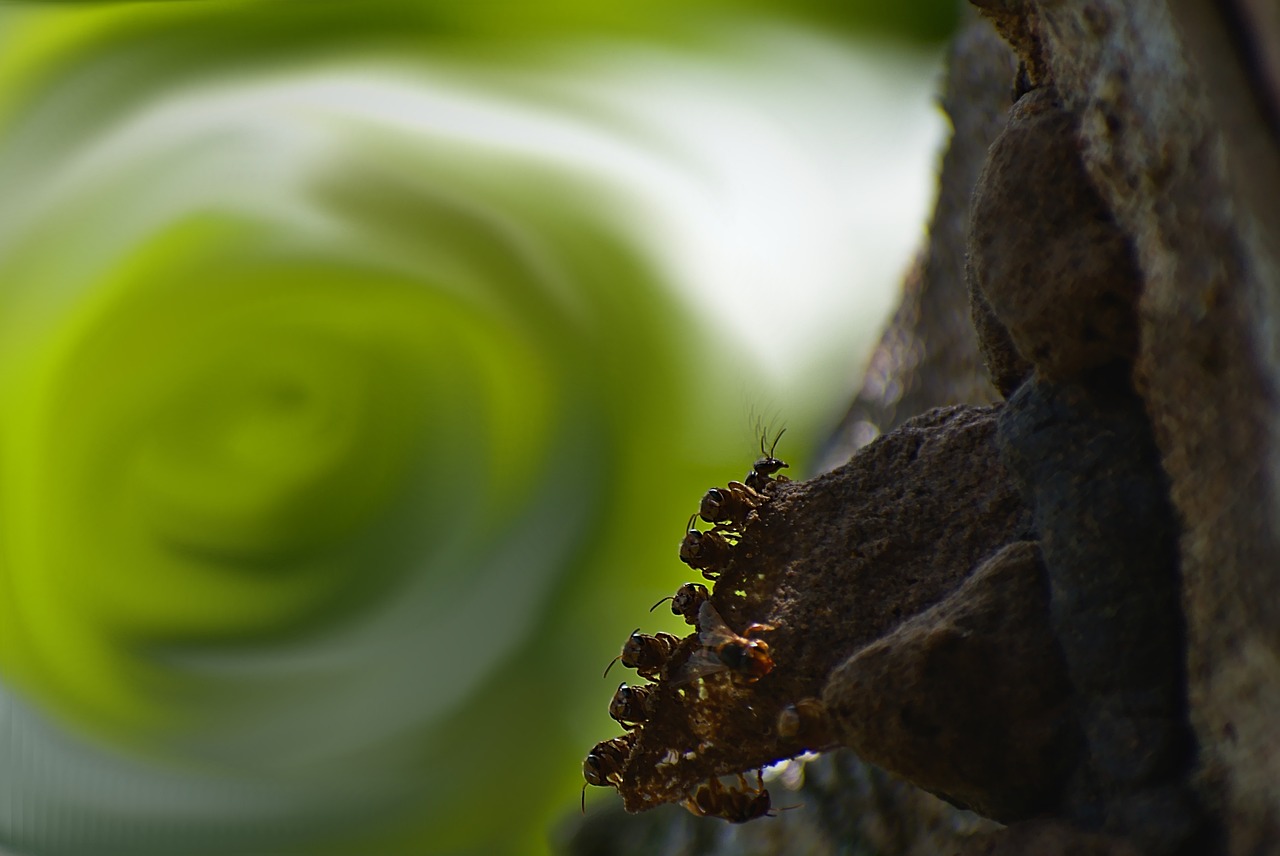
The Role of Wild Bees in Pollination
Wild bees are not just cute little creatures buzzing around your garden; they are essential players in the grand game of life on Earth. These tiny powerhouses are responsible for the pollination of over 70% of the world’s flowering plants, which includes a significant number of our food crops. Imagine a world without apples, blueberries, or almonds—sounds bleak, right? That's because wild bees are crucial in helping these plants reproduce. When they visit flowers to collect nectar, they inadvertently transfer pollen from one bloom to another, facilitating the fertilization process. This natural service they provide is vital for maintaining biodiversity and ensuring food security.
Let’s break it down a bit further. The relationship between wild bees and plants is a classic example of mutualism, where both parties benefit. Plants provide bees with nourishment in the form of nectar and pollen, while bees, in return, help plants reproduce by spreading their pollen. This intricate dance is essential not just for the plants that bees pollinate but also for the animals and humans that rely on those plants for food and habitat. Without these hardworking pollinators, many ecosystems would face a collapse, leading to a significant loss of biodiversity.
Moreover, the economic impact of wild bee pollination is staggering. According to estimates, wild bees contribute around $3 billion annually to U.S. agriculture alone. This figure encompasses not only the direct food crops they help pollinate but also the broader implications for our economy, including job creation in agriculture, food production, and beyond. So, next time you bite into a juicy peach or enjoy a spoonful of honey, remember the wild bees that made it possible!
However, it’s not just about the economic benefits. The ecological roles that wild bees play are profound. They help maintain the health of ecosystems by promoting plant diversity, which in turn supports other wildlife. A diverse plant community can provide habitats for various species, creating a balanced ecosystem where different organisms thrive. This balance is crucial for the resilience of our environment against changes like climate shifts and habitat destruction.
In summary, wild bees are the unsung heroes of our ecosystems. Their role in pollination is not just about food production; it’s about fostering healthy ecosystems, supporting biodiversity, and contributing to our economy. Protecting these vital pollinators is essential for our future, and understanding their role is the first step in ensuring their survival. As stewards of the environment, we must recognize the significance of wild bees and take actionable steps to support their populations.
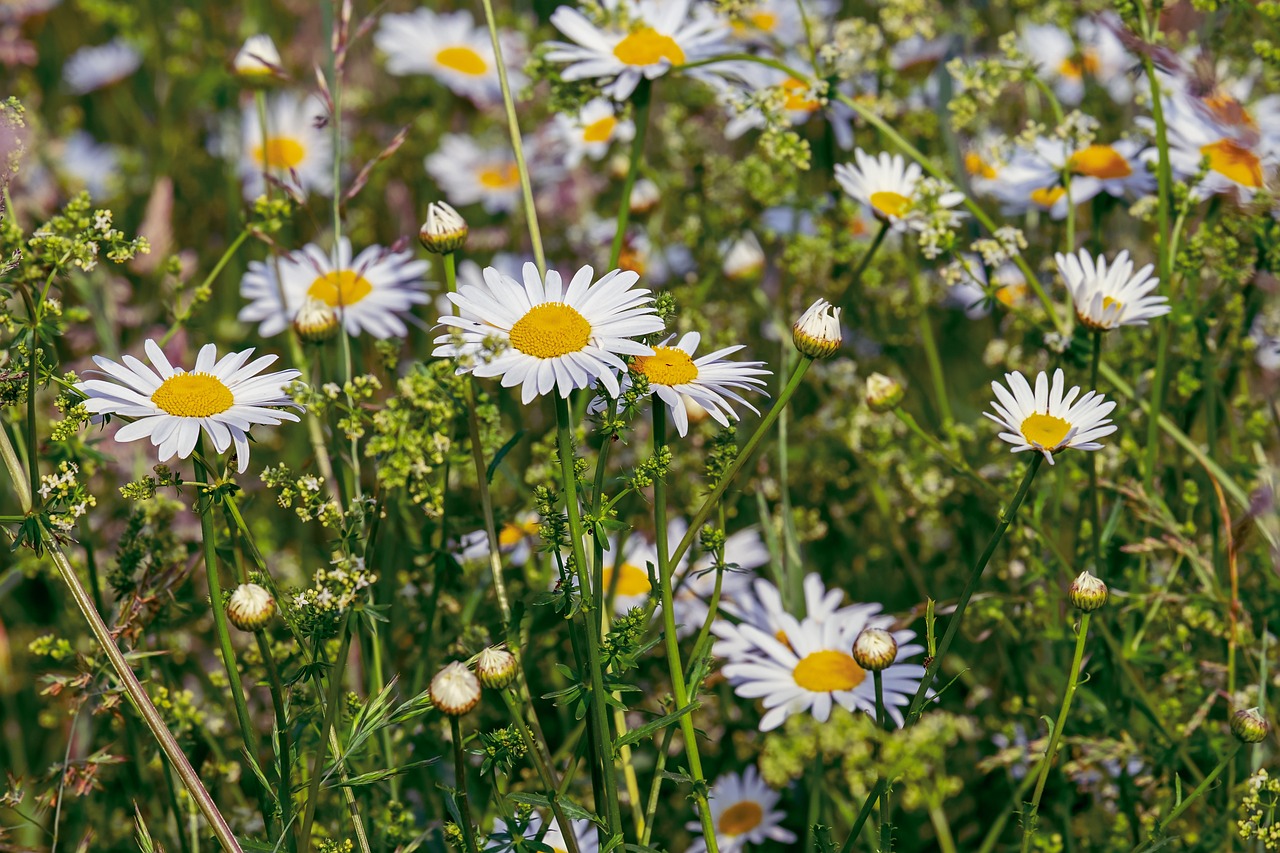
Threats Facing Wild Bee Populations
Wild bee populations are experiencing a dramatic decline, and the reasons behind this alarming trend are multifaceted. From habitat loss to the pervasive use of pesticides, these threats are not just numbers on a graph; they represent a profound disruption in our ecosystems. Imagine a world devoid of the vibrant colors of wildflowers or the sweet taste of fruits and vegetables. This scenario could become a reality if we don't take action to protect these crucial pollinators.
One of the most significant threats to wild bees is habitat loss. As urban areas expand, natural landscapes are transformed into concrete jungles, leaving bees with fewer places to forage and nest. The loss of meadows, forests, and other vital habitats means that wild bees struggle to find the food sources they need to survive. Without these essential resources, their populations dwindle, and the delicate balance of our ecosystems is disrupted.
Moreover, the use of pesticides poses a dire threat to wild bee health. These chemicals, designed to eradicate pests, often have unintended consequences for non-target species, including bees. Studies have shown that exposure to pesticides can impair bee behavior, reduce their reproductive success, and even lead to colony collapse. It's shocking to think that the very substances meant to protect crops can also jeopardize the pollinators that are essential for those crops' growth.
Additionally, climate change plays a pivotal role in the decline of wild bee populations. As temperatures rise and weather patterns shift, the natural cycles of flowering plants and bee activity become misaligned. For instance, if flowers bloom earlier due to warmer temperatures, but bees are not active yet, the result is a mismatch that can lead to food shortages for these vital insects. This phenomenon is akin to a symphony where the musicians are out of sync, resulting in a discordant performance.
To further illustrate the impact of these threats, consider the following table that summarizes the primary challenges facing wild bees:
| Threat | Description | Impact on Wild Bees |
|---|---|---|
| Habitat Loss | Urbanization and agricultural expansion reduce natural habitats. | Decreased food sources and nesting sites. |
| Pesticide Use | Chemicals designed to kill pests harm bees. | Impaired behavior and reduced reproductive success. |
| Climate Change | Shifts in temperature and weather patterns affect flowering times. | Mismatch between bee activity and plant blooming. |
Understanding these threats is vital for developing effective conservation strategies. By raising awareness and taking action, we can create a future where wild bees thrive alongside us. So, what can we do about it? The first step is acknowledging the problem and recognizing that each of us has a role to play in safeguarding these essential pollinators.
- Why are wild bees important? Wild bees play a crucial role in pollinating many plants, including crops, which supports biodiversity and food production.
- What can I do to help wild bees? You can create bee-friendly gardens, avoid using pesticides, and plant native flowers to provide food sources for bees.
- How does climate change affect bees? Climate change can disrupt the synchrony between bees and flowering plants, leading to food shortages for bees.
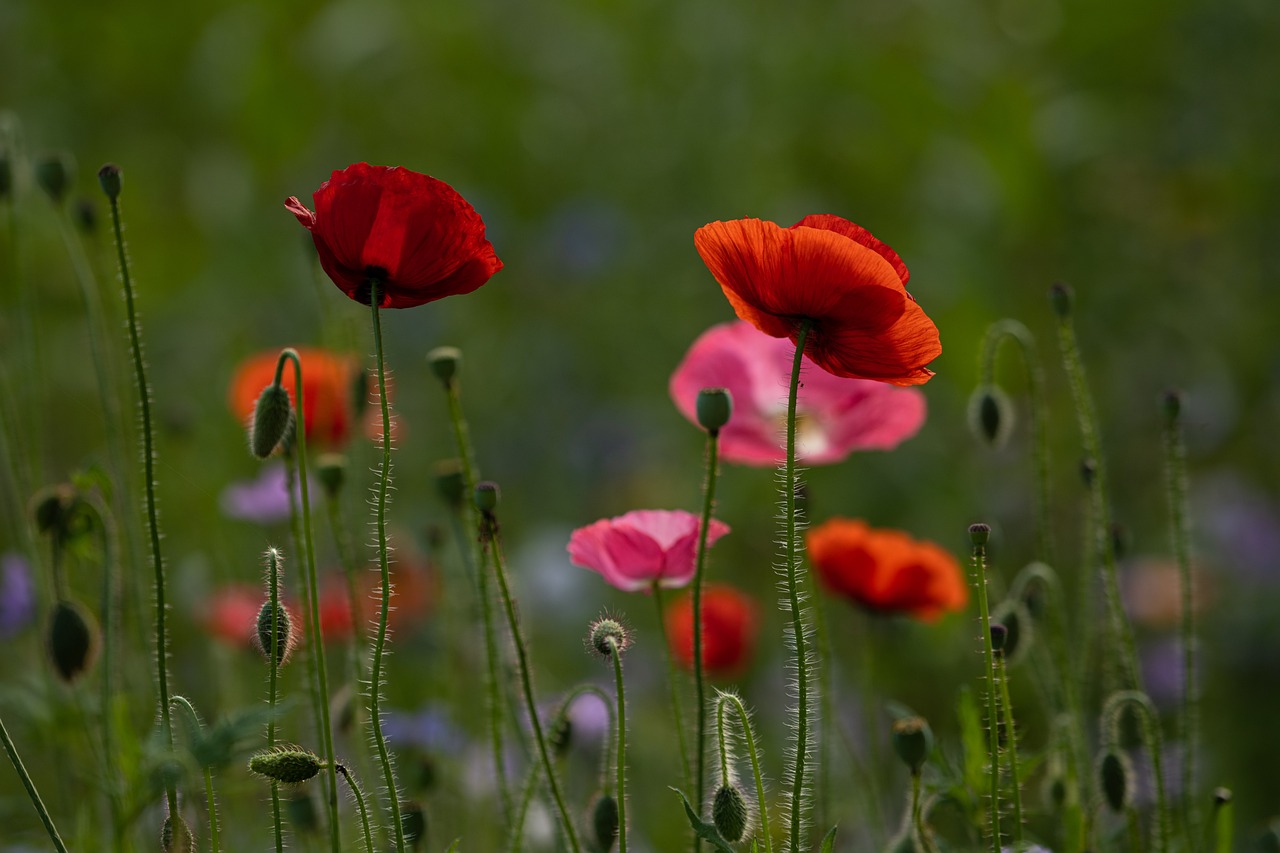
Habitat Loss and Urbanization
As our cities grow and urban areas expand, the once abundant natural habitats that wild bees relied on are rapidly disappearing. This phenomenon, often referred to as habitat loss, is a significant threat to bee populations. Imagine a bustling city where concrete replaces flowers, and the sweet buzz of bees is replaced by the roar of traffic. It’s a stark reality for many species of wild bees, which depend on diverse ecosystems for their survival.
Urbanization leads to the destruction of essential habitats, making it increasingly difficult for wild bees to find the food and nesting sites they need. When forests, meadows, and fields are transformed into parking lots and skyscrapers, the delicate balance of our ecosystems is disrupted. This not only affects bees but also the plants that rely on them for pollination. Without these vital pollinators, many crops and wild plants would struggle to reproduce, leading to a decline in biodiversity.
Moreover, urban environments often lack the native flora that wild bees thrive on. Native plants are crucial because they provide the specific nectar and pollen that many bee species need for nourishment. When these plants are replaced with non-native species or ornamental plants that offer little to no value for bees, it creates a food desert for these essential pollinators. In fact, studies have shown that urban areas with a higher diversity of native plants tend to support larger populations of wild bees.
To combat this issue, it's essential to rethink how we design our urban spaces. By incorporating green roofs, community gardens, and bee-friendly landscapes, we can create habitats that support wild bee populations. Even small changes, such as planting native flowers in backyards or on balconies, can make a significant difference. Every little bit helps, and together, we can transform our urban jungles into thriving environments for wild bees.
In summary, the impact of habitat loss and urbanization on wild bee populations is profound. As cities continue to expand, it’s imperative that we take action to preserve and restore the natural habitats that these vital pollinators need. By fostering a connection between urban development and ecological health, we can ensure that wild bees have a fighting chance in our ever-changing world.
- Why are wild bees important? Wild bees are crucial for pollination, which supports food production and maintains biodiversity.
- What can I do to help wild bees? You can plant native flowers, create bee-friendly habitats, and reduce pesticide use in your garden.
- How does urbanization affect bee populations? Urbanization leads to habitat loss, reducing the availability of food and nesting sites for wild bees.
- Are all bees endangered? Not all bees are endangered, but many wild bee species are experiencing population declines due to various threats.
- What role do native plants play in bee conservation? Native plants provide essential resources, like nectar and pollen, that support wild bee populations and promote biodiversity.
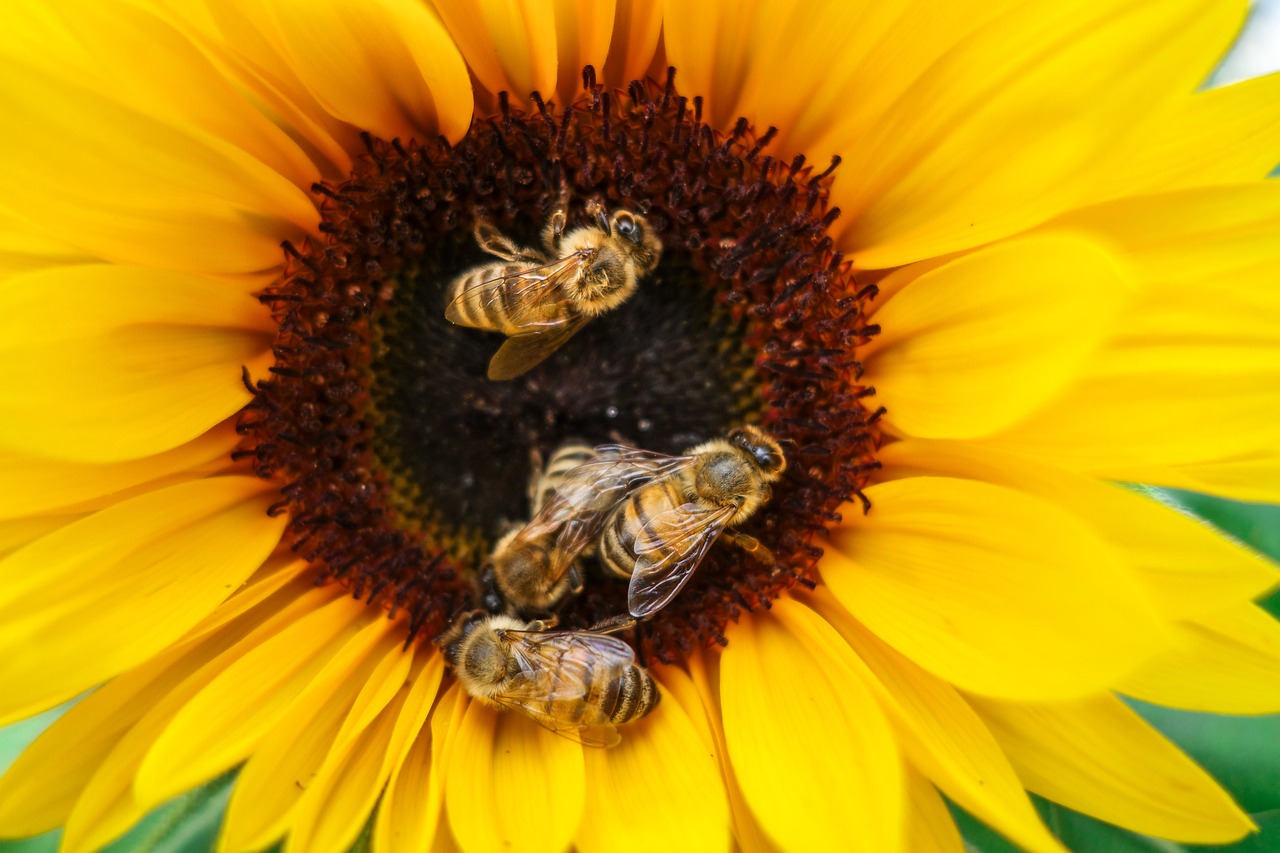
The Importance of Native Plants
When it comes to supporting wild bee populations, native plants are the unsung heroes of our ecosystems. These plants are not just beautiful additions to our gardens; they serve as vital resources for wild bees, providing them with nectar and pollen that are essential for their survival. Unlike non-native species, which may not offer the right nutrients or may even be harmful, native plants have co-evolved with local pollinators, making them the perfect match for sustaining bee populations.
Imagine a world where every garden is a vibrant tapestry of colors, buzzing with the sound of bees happily pollinating flowers. This can be a reality if we prioritize planting native species. By doing so, we create a supportive habitat that encourages the growth of local bee populations. For instance, plants like coneflowers, milkweeds, and sunflowers not only attract bees but also provide them with the food they need to thrive. It’s like setting up a buffet for our buzzing friends!
Moreover, native plants are often more resilient to local pests and diseases, which means they require less maintenance and fewer chemical inputs. This is a win-win situation for both the environment and our health. By reducing the need for pesticides, we create a safer environment for bees and other beneficial insects. It’s important to recognize that the decline of bee populations is closely linked to the loss of native flora. As urbanization continues to expand, we must take action to preserve these crucial plants.
To illustrate the benefits of native plants, consider the following table:
| Native Plant | Benefits for Wild Bees | Blooming Season |
|---|---|---|
| Purple Coneflower | Rich in nectar; attracts various bee species | Summer |
| Milkweed | Essential for Monarch butterflies; provides nectar | Summer to Fall |
| Bee Balm | Highly attractive to bees; fragrant | Summer |
By encouraging the growth of these native plants, we can help create a thriving ecosystem that supports not only bees but also other pollinators and wildlife. It’s essential for us to take a step back and appreciate the intricate web of life that surrounds us and recognize that our actions can have a significant impact on the health of our environment.
In conclusion, the importance of native plants in supporting wild bees cannot be overstated. They are the foundation of a healthy ecosystem, providing necessary resources and promoting biodiversity. As stewards of the environment, we have the power to make a difference by planting native species and advocating for their preservation. So, let’s roll up our sleeves and get planting!
- Why are native plants better for wild bees? Native plants have evolved alongside local bee populations, providing the right nutrients and habitat that bees need for survival.
- How can I identify native plants? You can consult local gardening centers or online resources that specialize in native flora to find suitable plants for your area.
- What are some easy native plants to start with? Some easy options include coneflowers, milkweed, and bee balm, which are all beneficial for bees.
- How can I create a bee-friendly garden? Incorporate a variety of native plants, avoid pesticides, and provide nesting sites to attract and support wild bees.
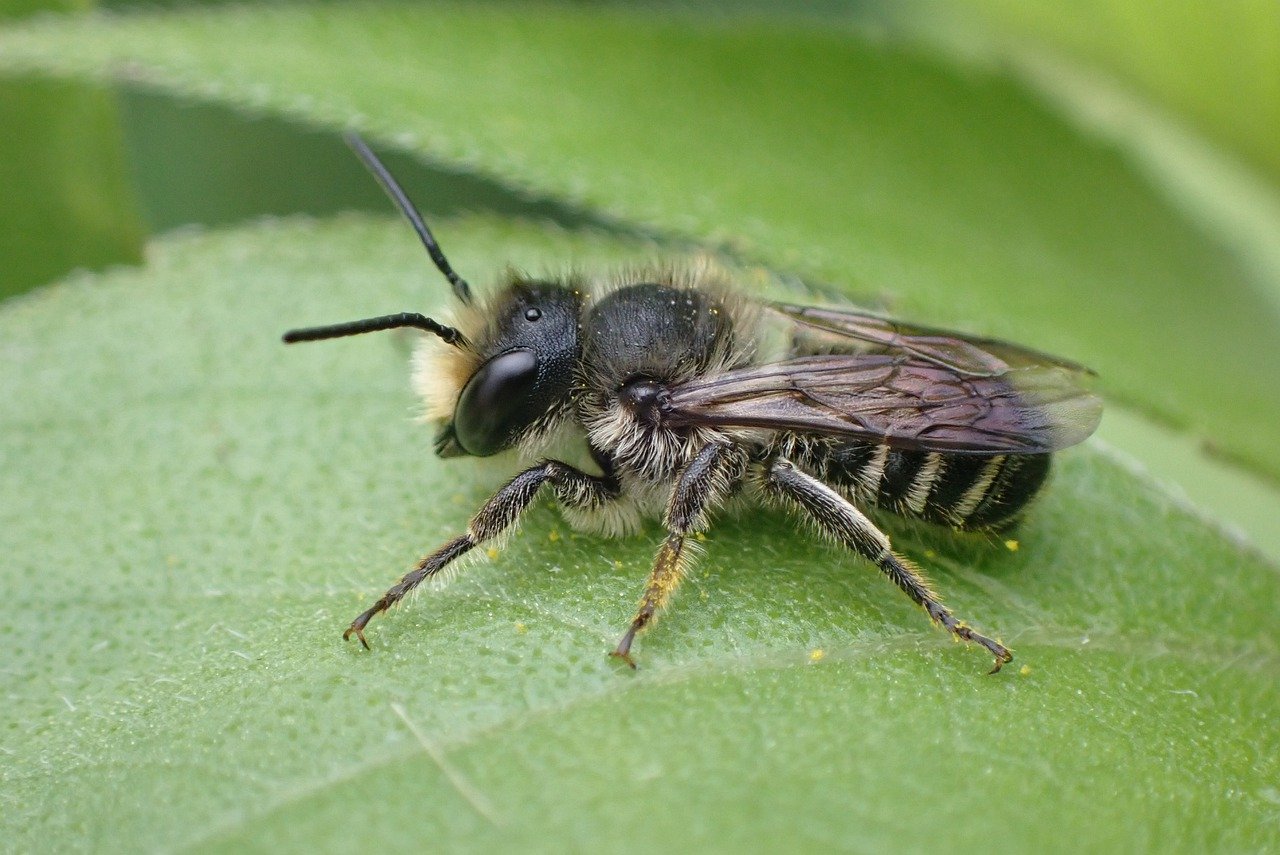
Creating Bee-Friendly Spaces
Creating bee-friendly spaces is not just a trend; it's a vital step we can take to support our buzzing friends and, in turn, our entire ecosystem. Imagine transforming your garden, balcony, or even a small patch of land into a sanctuary for wild bees. It’s like throwing a party for nature, where the guests are those hardworking pollinators that play a crucial role in our food production and biodiversity. But how do we go about making these spaces inviting?
First off, native plants are your best friends. These plants are adapted to your local environment and provide the right kind of nectar and pollen that bees love. Think of them as the five-star dining experience for wild bees. When selecting plants, aim for a variety that blooms at different times throughout the growing season. This ensures that there’s always something tasty for the bees to munch on, no matter the time of year. For example, early bloomers like crocuses and late bloomers such as asters can keep the buffet open for these pollinators.
Another essential factor is to provide shelter. Wild bees need safe spaces to nest, which can be as simple as leaving some areas of your garden a bit wild. Bare patches of soil, dead wood, and even hollow stems can serve as perfect nesting sites. You might want to consider building a bee hotel, which can be a fun DIY project. Just think of it as creating a cozy apartment complex for your local bee population!
Moreover, it’s crucial to avoid using harmful chemicals in your garden. Pesticides can be detrimental to bee health, causing a range of issues from disorientation to death. Instead, consider using natural pest control methods, such as introducing beneficial insects that feed on pests or using organic solutions that won’t harm your buzzing guests. It’s like choosing to serve organic food at that party we mentioned earlier—better for everyone involved!
Lastly, it’s important to create a water source for bees. A shallow dish filled with pebbles and water can provide a safe drinking spot for bees. Just make sure the pebbles stick out of the water so bees can land without the risk of drowning. This small addition can make your space even more appealing to these essential pollinators.
In summary, creating bee-friendly spaces is a rewarding endeavor that not only supports wild bee populations but also enhances the beauty and biodiversity of our surroundings. By planting native flora, providing shelter, avoiding harmful chemicals, and ensuring a water source, we can all contribute to a healthier environment for bees. So, let’s roll up our sleeves and get to work—after all, every little effort counts!
- What are the best plants to attract wild bees?
Native wildflowers, such as coneflowers, sunflowers, and clover, are excellent choices. - How can I create a bee hotel?
Use untreated wood, hollow stems, and bamboo sticks to create small compartments for bees to nest in. - Is it safe to use pesticides in my garden?
It's best to avoid chemical pesticides; opt for organic alternatives to protect bees. - How can I tell if bees are visiting my garden?
Look for buzzing sounds, observe pollination activity, and check for bee nests nearby.
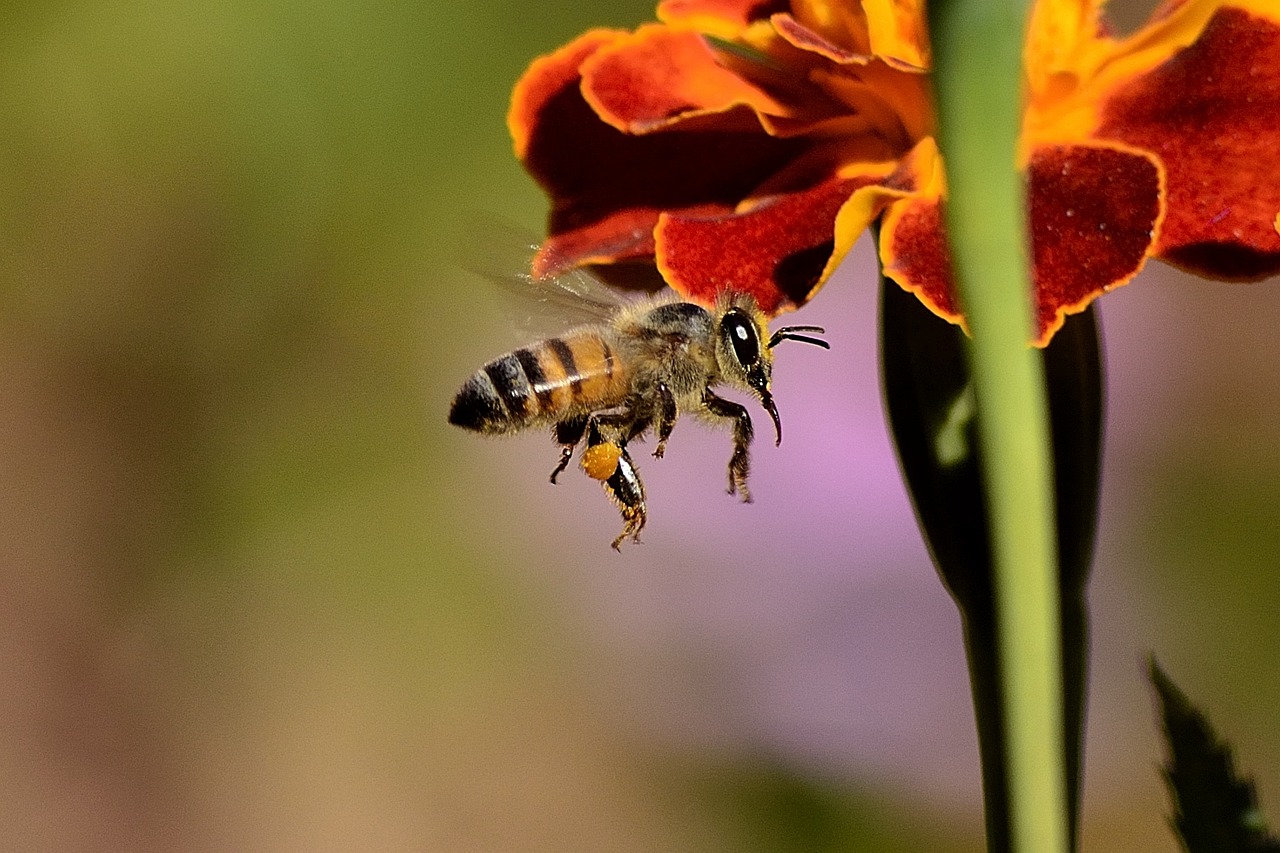
Pesticide Use and Its Consequences
Pesticides are often seen as necessary tools for modern agriculture, but their impact on wild bee populations is anything but benign. These chemical agents, designed to eliminate pests, can inadvertently harm the very creatures that play a crucial role in pollination. Imagine a world where the vibrant buzz of bees is replaced by an eerie silence; this is the grim reality we face if pesticide use continues unchecked. The consequences of pesticide exposure on wild bees are profound and multifaceted, affecting their health, behavior, and ultimately, their survival.
Research has shown that pesticides can impair the cognitive functions of bees, making it difficult for them to navigate back to their hives or even recognize flowers. This cognitive decline can lead to decreased foraging efficiency, which in turn impacts their ability to gather food and pollinate plants. The ripple effect of this decline is alarming, as it threatens the very ecosystems that rely on these pollinators. Additionally, the toxicity of certain pesticides can lead to direct mortality, with some studies indicating that even sub-lethal doses can cause significant harm over time.
One of the most concerning aspects of pesticide use is the phenomenon of synergistic toxicity. This occurs when bees are exposed to multiple pesticides simultaneously, resulting in effects that are more severe than the sum of their individual impacts. For instance, a bee exposed to a neonicotinoid pesticide may not die immediately, but when combined with other chemicals, its immune system can weaken, making it more susceptible to diseases and parasites. This interconnectedness highlights the urgent need for a more holistic approach to pest management that considers the health of pollinators.
Furthermore, the timing of pesticide application is critical. Many farmers apply pesticides during the flowering season, which coincides with the peak activity of wild bees. This overlap can lead to catastrophic outcomes for bee populations. To illustrate this, consider the following table that depicts the relationship between pesticide application and bee activity:
| Month | Bee Activity Level | Pesticide Application Frequency |
|---|---|---|
| January | Low | Rare |
| April | Moderate | Occasional |
| June | High | Frequent |
| August | Moderate | Occasional |
As we can see, the peak months for bee activity often align with increased pesticide applications. This overlap poses a significant threat to bee populations, making it imperative for farmers and policymakers to reconsider their practices.
In conclusion, the use of pesticides represents a double-edged sword; while they may protect crops from pests, they simultaneously jeopardize the health of wild bees. The consequences of pesticide exposure are not just a matter of bee survival; they ripple through our ecosystems, affecting food production, biodiversity, and even human health. As stewards of the environment, it is our responsibility to advocate for safer agricultural practices that prioritize the well-being of our pollinators.
- What are the main types of pesticides that affect wild bees?
The most harmful types of pesticides include neonicotinoids, organophosphates, and pyrethroids, all of which can have detrimental effects on bee health.
- How can farmers reduce pesticide use?
Farmers can adopt integrated pest management (IPM) practices, which focus on using biological control methods, crop rotation, and planting pest-resistant crop varieties.
- What can individuals do to help protect wild bees from pesticides?
Individuals can advocate for organic farming practices, create bee-friendly gardens, and educate themselves and others about the importance of pollinators.
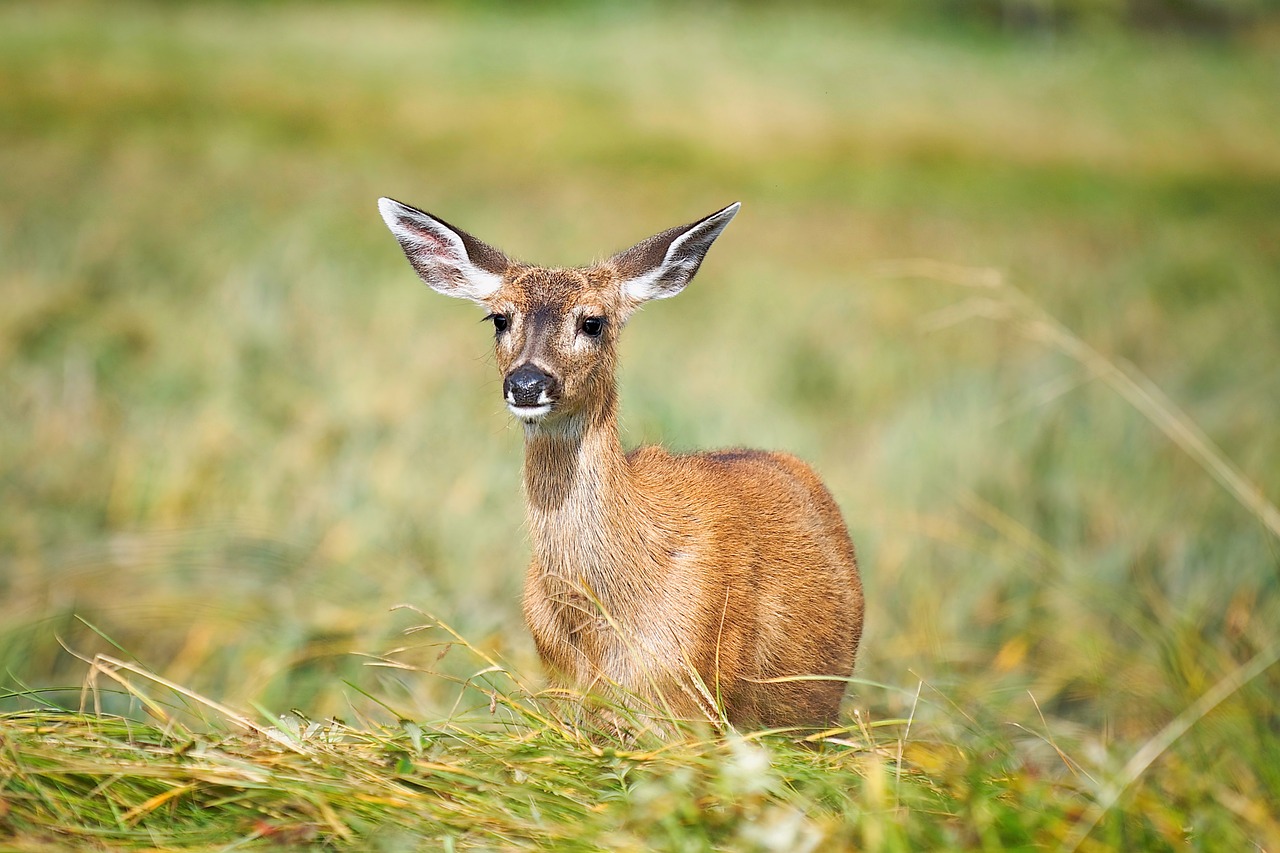
Conservation Efforts and Initiatives
As the plight of wild bees becomes increasingly apparent, a wave of conservation efforts and initiatives is emerging to combat the threats they face. These efforts are crucial not only for the survival of these vital pollinators but also for the health of our ecosystems and food systems. Various organizations, from local grassroots movements to international NGOs, are stepping up to make a difference. They are implementing strategies that range from habitat restoration to public education, all aimed at ensuring that wild bees can thrive.
One of the most significant initiatives is the establishment of pollinator-friendly habitats. These habitats are designed to provide bees with the necessary resources, such as nectar and pollen, while also offering safe nesting sites. For instance, organizations like the Pollinator Partnership work tirelessly to promote the creation of these habitats across urban and rural landscapes. They encourage individuals, schools, and businesses to transform their gardens and green spaces into bee-friendly environments. This not only helps the bees but also enhances biodiversity and beautifies our surroundings.
Moreover, educational programs play a pivotal role in raising awareness about the importance of wild bees. Many initiatives focus on informing the public about the critical role these insects play in pollination and food production. Workshops, community events, and online resources are just a few ways that organizations engage with the community. For example, the Bee Conservancy offers resources for schools to incorporate bee education into their curriculum, fostering a new generation of bee advocates.
Another essential aspect of conservation efforts involves policy advocacy. Organizations are lobbying for legislative changes that protect wild bees and their habitats. This includes advocating for restrictions on harmful pesticides and promoting sustainable agricultural practices. Effective policy changes can create a ripple effect, leading to broader protections for wild bees on a national and even global scale. For instance, the European Union has implemented policies aimed at reducing pesticide use, which has shown promising results in some regions.
In addition to these efforts, community involvement is crucial. Local communities are often at the forefront of conservation initiatives, leading projects that directly benefit wild bee populations. Whether it's organizing community planting days or establishing local beekeeping clubs, these grassroots movements are vital for creating a supportive environment for bees. When communities come together, they can make a significant impact. In fact, studies have shown that community-led initiatives often lead to more sustainable and effective conservation outcomes.
To summarize, the conservation of wild bees is a multifaceted effort that requires collaboration among individuals, organizations, and policymakers. By creating pollinator-friendly habitats, raising public awareness, advocating for better policies, and fostering community engagement, we can ensure that wild bees continue to thrive. The future of these essential pollinators depends on our collective action and commitment to protecting them.
- Why are wild bees important? Wild bees play a crucial role in pollinating plants, including many crops, which is essential for food production and maintaining biodiversity.
- What can I do to help wild bees? You can create bee-friendly gardens, avoid using pesticides, and support local conservation initiatives.
- Are all bees endangered? Not all bee species are endangered, but many wild bee populations are declining due to habitat loss, pesticides, and climate change.
- How do I identify wild bees? Wild bees vary in size, color, and behavior. Observing their nesting habits and the flowers they visit can help you identify them.
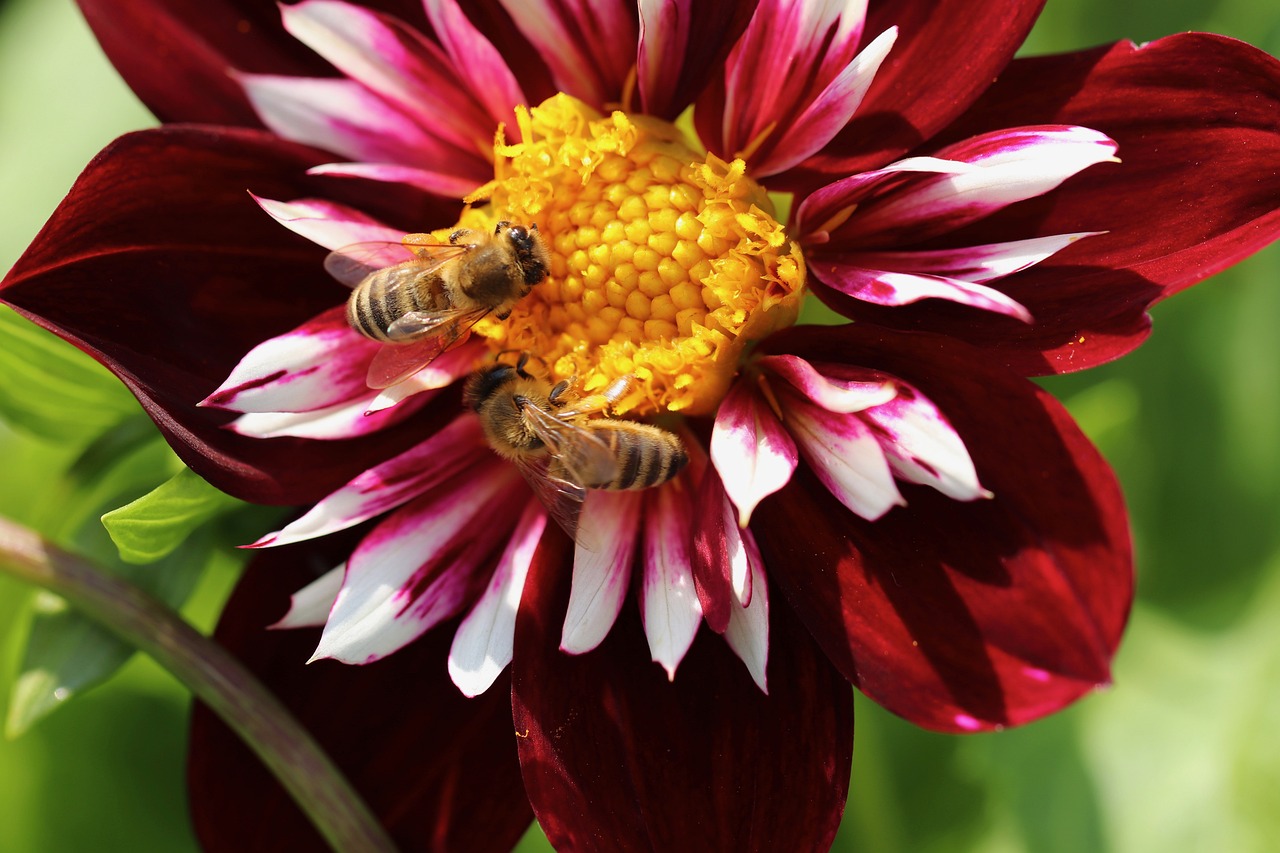
Community Involvement in Bee Conservation
When it comes to saving our buzzing friends, the wild bees, community involvement is absolutely vital. Imagine a neighborhood where everyone is not just aware of the importance of bees but actively participates in their conservation. This collective effort can create a ripple effect, leading to healthier ecosystems and bountiful gardens. It’s like a symphony where every note counts; together, we can create a harmonious environment that supports these essential pollinators.
Communities can engage in various activities that directly benefit wild bees. For instance, organizing local workshops to educate residents about bee-friendly practices can be incredibly impactful. These workshops can cover topics like the significance of native plants, the dangers of pesticides, and how to create bee habitats in backyards. When people understand the role they play, they’re more likely to take action. It’s not just about planting a flower; it’s about planting a seed of knowledge that grows into a community-wide initiative.
Moreover, community gardens serve as a fantastic platform for bee conservation. These gardens can be designed with a focus on biodiversity, planting a variety of flowers that bloom at different times throughout the year to provide a continuous food source for bees. Involving local schools in these gardening projects can also foster a sense of responsibility among younger generations. When kids see the direct impact of their efforts—watching bees flit from flower to flower—they develop a deeper appreciation for nature.
Another effective way to promote community involvement is through the establishment of local bee clubs or organizations. These groups can serve as a hub for enthusiasts to share resources, tips, and experiences related to bee conservation. They can organize events like “Bee Days,” where community members come together to plant flowers, build bee hotels, and learn more about the fascinating world of bees. It’s about creating a buzz—literally and figuratively—around the importance of these pollinators.
To further support these initiatives, local governments can play a crucial role by providing resources and incentives. For example, offering grants for community-led conservation projects or creating “Bee-Friendly” designations for businesses that support bee habitats can encourage more people to get involved. It’s a partnership that benefits everyone involved, from the bees to the residents.
Ultimately, the key to successful community involvement lies in collaboration and education. By working together, sharing knowledge, and promoting bee-friendly practices, communities can create environments where wild bees thrive. It’s a shared responsibility, and every little action counts. So, let’s roll up our sleeves, get our hands dirty, and make a difference for our buzzing companions!
- Why are wild bees important? Wild bees play a crucial role in pollinating plants, which is essential for food production and maintaining biodiversity.
- How can I create a bee-friendly garden? Plant a variety of native flowers, avoid pesticides, and provide nesting sites to attract and support wild bees.
- What can communities do to support wild bee populations? Organize educational workshops, establish community gardens, and create local bee clubs to raise awareness and promote conservation efforts.
- How do pesticides affect wild bees? Pesticides can harm bees' health, impair their ability to forage, and disrupt their reproductive processes, leading to population declines.
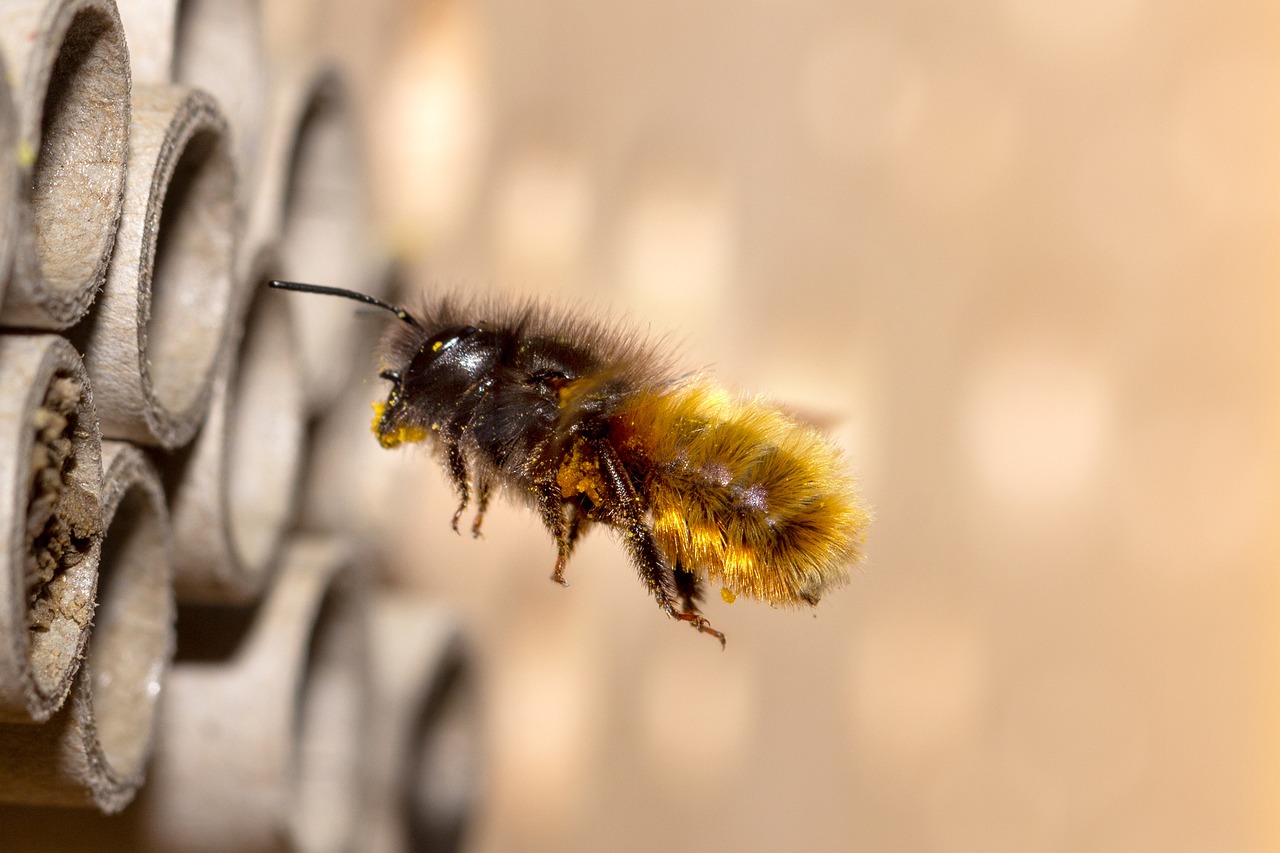
Policy Changes for Bee Protection
When it comes to protecting our precious wild bees, policy changes can be a game-changer. These tiny pollinators are facing a myriad of threats, and without the right legal framework, their populations may continue to dwindle. Governments and organizations worldwide are beginning to recognize the importance of implementing policies that not only safeguard bees but also promote biodiversity as a whole. But what exactly do these policy changes entail?
One significant area of focus is restricting harmful pesticides. Many countries are now considering or have already enacted bans on specific pesticides known to harm bee populations. For instance, the European Union has taken steps to ban neonicotinoids, a class of neuro-active insecticides that have been shown to have detrimental effects on bees. This is a vital move, but it’s just the tip of the iceberg. Comprehensive regulations need to be established to ensure that all pesticides used in agriculture are safe for pollinators.
Another critical policy change involves protecting and restoring habitats. Urbanization and agricultural expansion have led to significant habitat loss for wild bees. Policies that promote the creation of pollinator-friendly habitats, such as wildflower strips and green corridors, are essential. For instance, governments can incentivize farmers to plant cover crops or native plants that support bee populations. Additionally, urban planning should incorporate green spaces that are specifically designed to attract and support wild bees.
Furthermore, education and awareness campaigns are crucial for fostering a culture of conservation. Policies that allocate funding for public education about the importance of bees can lead to increased community involvement in conservation efforts. Imagine a world where every school teaches children about the vital role of bees in our ecosystem! This grassroots knowledge can empower individuals to take action in their own backyards, creating a ripple effect that benefits bee populations.
To track the effectiveness of these policies, it’s imperative to implement monitoring and evaluation systems. This way, we can assess the health of bee populations and the impact of conservation measures. Data collected can inform future policy decisions and ensure that we are on the right track to protect these essential pollinators. For example, a table detailing the progress of bee population recovery in regions that have implemented specific policies could provide valuable insights:
| Region | Policy Implemented | Bee Population Change (%) |
|---|---|---|
| Europe | Ban on neonicotinoids | +30% |
| California | Pollinator habitat restoration | +25% |
| Ontario | Public education initiatives | +15% |
In conclusion, policy changes are not just bureaucratic red tape; they are essential steps toward ensuring the survival of wild bees. By restricting harmful pesticides, protecting habitats, raising awareness, and monitoring outcomes, we can create a supportive environment for these vital pollinators. Remember, every action counts, and advocating for these changes can lead to a healthier planet for all of us.
- Why are wild bees important? Wild bees are crucial for pollination, which supports food production and biodiversity.
- What are the main threats to wild bee populations? The primary threats include habitat loss, pesticide use, and climate change.
- How can individuals help protect wild bees? Individuals can create bee-friendly gardens, advocate for policy changes, and educate others about the importance of bees.
- What policies are effective in protecting wild bees? Effective policies include banning harmful pesticides, restoring habitats, and funding public education campaigns.
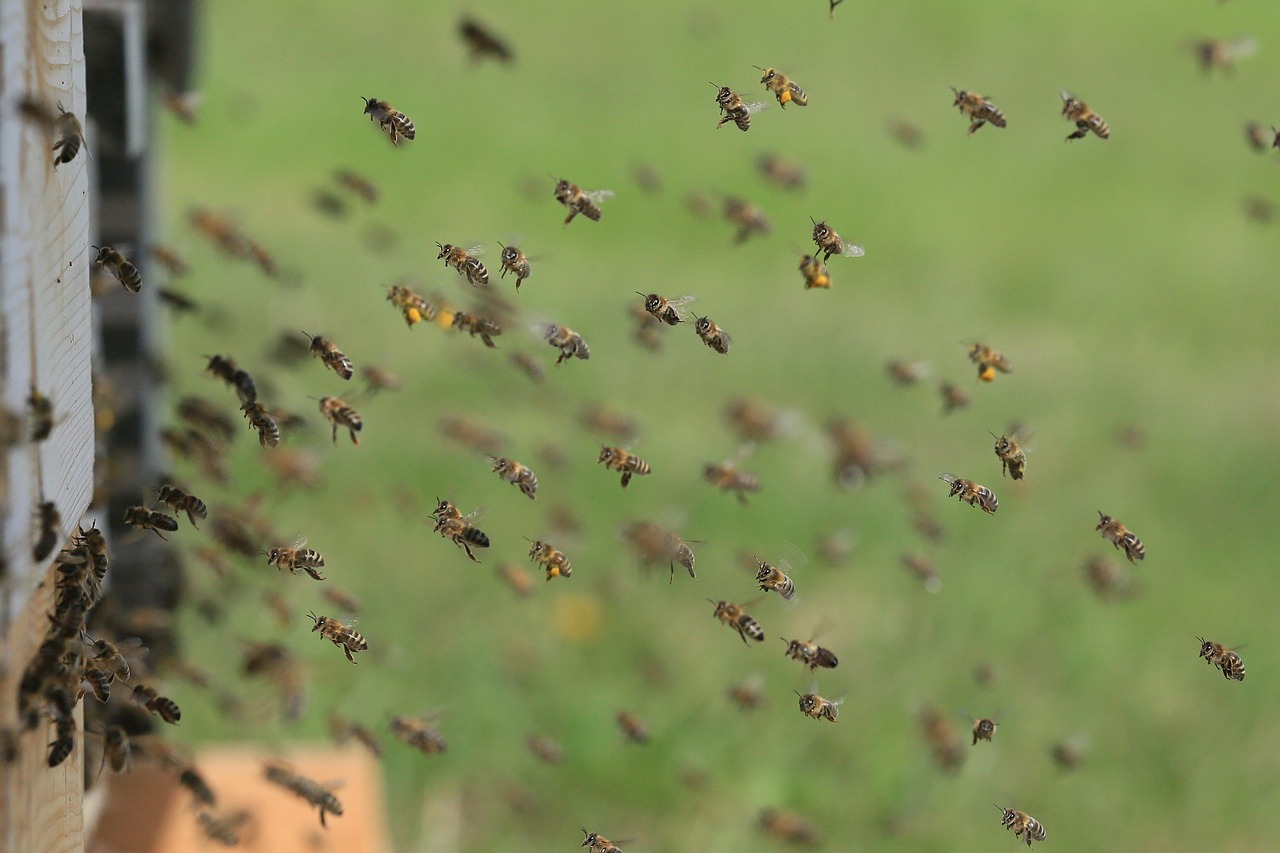
How Individuals Can Make a Difference
Every single one of us holds the power to make a significant impact on the survival of wild bees. It might sound like a tall order, but small, everyday actions can collectively lead to monumental change. Think of it as a ripple effect; when one person takes action, it inspires others to do the same. Whether you're a city dweller or a rural resident, there are numerous ways you can contribute to the conservation of these vital pollinators.
One of the most effective ways to help wild bees is by creating a bee-friendly environment right in your own backyard or balcony. Planting native flowers is crucial because these plants provide the essential nectar and pollen that bees need. Not only do native plants thrive in your local climate, but they also support the local ecosystem. You might consider creating a small garden that includes a variety of flowering plants that bloom at different times throughout the year. This ensures a continuous food supply for bees, which is particularly important during their active seasons.
Additionally, reducing or completely eliminating the use of pesticides in your garden can have a profound impact. Pesticides are notorious for harming bee populations, and even a small amount can be detrimental. Instead of chemical treatments, consider natural alternatives. For instance, you can use insecticidal soaps or introduce beneficial insects, such as ladybugs, to manage pests. By making this simple switch, you not only protect bees but also promote a healthier garden ecosystem.
Another way to make a difference is by participating in local conservation efforts. Many communities have organizations that focus on pollinator protection and habitat restoration. Getting involved can be as simple as volunteering for a local planting event or attending workshops to learn more about bee-friendly practices. You can also support local farmers who use sustainable practices that protect wild bees. Buying organic produce or participating in community-supported agriculture (CSA) can help create a demand for bee-friendly farming.
Furthermore, spreading awareness about the importance of wild bees can amplify your impact. Talk to friends, family, and neighbors about the role bees play in our ecosystem and the challenges they face. Social media is a powerful tool for this purpose. Share articles, infographics, or your own experiences with bee conservation. The more people know, the more likely they are to take action themselves.
Lastly, if you're feeling particularly passionate about bee conservation, consider advocating for policy changes at the local or national level. Write to your representatives about the importance of protecting wild bee habitats and reducing pesticide use. Grassroots movements can lead to significant policy changes that support bee populations on a larger scale. Remember, when individuals unite for a common cause, their voices become a powerful force for change.
In summary, protecting wild bees is not just the responsibility of environmental organizations; it’s a collective effort that starts with each one of us. By making conscious choices in our gardens, supporting sustainable practices, raising awareness, and advocating for policy changes, we can all contribute to the survival of these essential pollinators. So, the next time you see a bee buzzing around, remember that your actions can help ensure that they continue to thrive for generations to come!
- What are some native plants I can plant to attract wild bees?
Some great options include purple coneflower, black-eyed Susan, and bee balm. These plants are not only beautiful but also provide essential resources for bees. - How can I tell if my garden is bee-friendly?
Look for a variety of flowering plants that bloom at different times, avoid using pesticides, and create nesting sites using bee hotels or leaving bare patches of soil. - What should I do if I see a bee in distress?
If you find a bee that seems weak or unable to fly, you can provide a sugar-water solution (mix two tablespoons of sugar with one tablespoon of water) on a small dish to help revive it.
Frequently Asked Questions
- Why are wild bees important for our environment?
Wild bees play a crucial role in pollination, which is essential for the reproduction of many plants, including those we rely on for food. Their activities help maintain biodiversity and support agricultural productivity, making them vital for ecological health.
- What are the main threats to wild bee populations?
Wild bee populations face several significant threats, including habitat loss due to urbanization, pesticide use, and climate change. These factors contribute to declining numbers and can disrupt their natural behaviors and habitats.
- How does habitat loss affect wild bees?
As urban areas expand, natural habitats are often destroyed, leading to fewer food sources and nesting sites for wild bees. This loss of habitat can severely impact their populations, making it essential to preserve and restore these environments.
- What role do native plants play in supporting wild bees?
Native plants are crucial for wild bees as they provide essential resources like nectar and pollen. By preserving native flora, we can create a supportive environment for these pollinators and enhance local biodiversity.
- How can I create a bee-friendly garden?
Creating a bee-friendly garden involves planting a variety of native flowers, providing nesting sites, and avoiding pesticides. Incorporating diverse plant species that bloom at different times can help provide a continuous food source for wild bees throughout the seasons.
- What are the effects of pesticides on wild bees?
Pesticides can have detrimental effects on wild bees, including impaired foraging behavior, reduced reproduction, and increased mortality rates. These chemicals can disrupt their natural behaviors and contribute to population declines.
- How can communities get involved in bee conservation?
Communities can play a vital role in bee conservation by participating in local initiatives, creating bee-friendly spaces, and raising awareness about the importance of wild bees. Grassroots movements can effectively implement conservation practices and educate others.
- What policies can help protect wild bees?
Advocating for policies that reduce pesticide use, protect natural habitats, and promote sustainable agriculture is essential for the long-term protection of wild bees. Supporting legislation that prioritizes ecological health can help mitigate threats to these vital pollinators.
- What can individuals do to help save wild bees?
Individuals can make a difference by planting bee-friendly gardens, reducing pesticide use, and supporting local conservation efforts. Simple actions like spreading awareness and educating others about the importance of wild bees can create a positive impact.



















